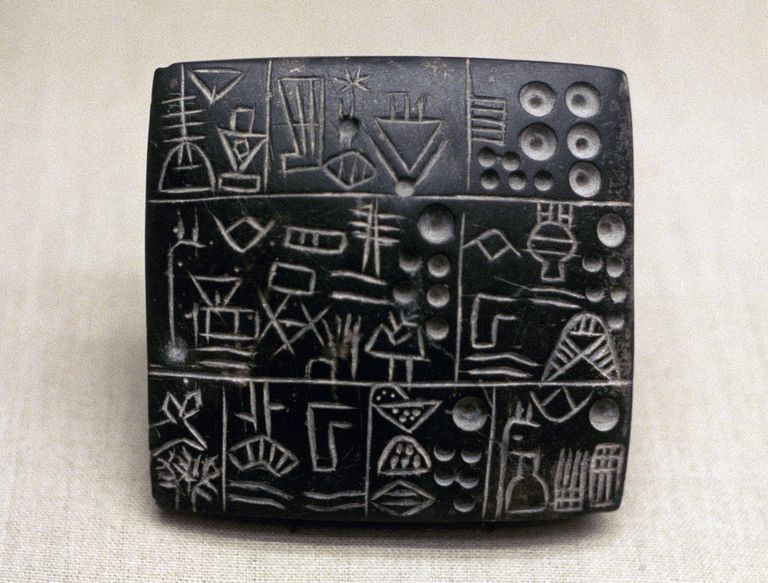Quantas tabuinhas cuneiformes da antiga Mesopotâmia os museus possuem? Onde estão?
Não há uma contagem oficial do número de tabuinhas cuneiformes da antiga Mesopotâmia mantidas por museus do mundo todo, mas os especialistas concordam que há cerca de meio milhão.
O maior acervo, de longe, está em poder do British Museum, em Londres, que possui aproximadamente 130 mil tabuinhas cuneiformes.
Em seguida, em ordem aproximadamente decrescente, estão o Museu Vorderasiatisches de Berlim, o Louvre em Paris, o Museu do Antigo Oriente em Istambul, o Museu de Bagdá e a Coleção Babilônica da Universidade de Yale, que, com 40.000 tabuinhas, tem o maior acervo nos Estados Unidos. Em segundo lugar, nos Estados Unidos, está o Museu de Arqueologia e Antropologia da Universidade da Pensilvânia.
There is no official tally of the number of ancient Mesopotamian cuneiform tablets held by the world’s museums, but experts agree that there are roughly half a million. The largest collection by far is in the possession of the British Museum, in London, which has approximately 130,000 of them. Next, in roughly descending order, are Berlin’s Vorderasiatisches Museum, the Louvre in Paris, the Museum of Ancient Orient in Istanbul, the Baghdad Museum and Yale University’s Babylonian Collection, which, with 40,000 tablets, has the largest holding in the United States. A close second is the University of Pennsylvania’s Museum of Archaeology and Anthropology.
:: A Short History of Proto-Cuneiform
The earliest true script in man’s history emerged at the end of the fourth millennium B.C. in ancient Babylonia, the southern part of today’s Iraq… The most prominent archaeological site of the Late Uruk period is the ancient city of Uruk.
:: The Origins of Writing
Recent archaeological research indicates that the origin and spread of writing may be more complex than previously thought. Complex state systems with proto-cuneiform writing on clay and wood may have existed in Syria and Turkey as early as the mid-fourth millennium B.C. If further excavations in these areas confirm this assumption, then writing on clay tablets found at Uruk would constitute only a single phase of the early development of writing. The Uruk archives may reflect a later period when writing “took off” as the need for more permanent accounting practices became evident with the rapid growth of large cities with mixed populations at the end of the fourth millennium B.C. Clay became the preferred medium for recording bureaucratic items as it was abundant, cheap, and durable in comparison to other mediums. Initially, a reed or stick was used to draw pictographs and abstract signs into moistened clay. Some of the earliest pictographs are easily recognizable and decipherable, but most are of an abstract nature and cannot be identified with any known object. Over time, pictographic representation was replaced with wedge-shaped signs, formed by impressing the tip of a reed or wood stylus into the surface of a clay tablet. Modern (nineteenth-century) scholars called this type of writing cuneiform after the Latin term for wedge, cuneus.
:: Cuneiform Collections
Since their discovery some 150 years ago cuneiform tablets have been discovered in both controlled and un-controlled excavations, and have been dispersed across the globe.
:: Cunéiforme
L’écriture cunéiforme est un système d’écriture mis au point en Basse Mésopotamie entre 3400 et 3200 av. J.-C., qui s’est par la suite répandu dans tout le Proche-Orient ancien, avant de disparaître dans les premiers siècles de l’ère chrétienne.
:: Proto-Cuneiform – Earliest Form of Writing on Planet Earth
The earliest proto-cuneiform comes from the earliest layers at the temple of Eanna in Uruk, dated to the Uruk IV period, about 3200 BC.
:: List of museums of ancient Near Eastern art
This is a list of museums with major art collections from the Ancient Near East. British Museum, London, UK. 290,000 objects; Vorderasiatisches Museum, Berlin, Germany. 250,000 objects…
:: A cultura cuneiforme
RADNER, K. ; ROBSON, E. (eds.) The Oxford Handbook of Cuneiform Culture. Oxford: Oxford University Press, 2011, 805 p. – ISBN 9780199557301.
Leia Mais:
Histórias do Antigo Oriente Médio: uma bibliografia
